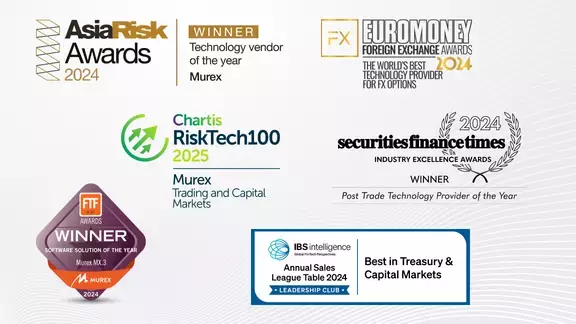-
Our solutions
- Our clients

With 300 clients and 60,000 users spread across 60 countries around the world, Murex has a truly international client base of capital markets participants.
view all case studies- Insights
- Who we are

Our awards highlight a strong level of customer satisfaction and acknowledge our market expertise.
Visit our awards webpage- Our partners
- Careers
MX.3 for public agencies

The right infrastructure delivers financial markets stability.
Public institutions rely on the software platform they use to inject liquidity into the economy, fund themselves and manage their reserves.
Public agencies are driven by specific service missions. With MX.3, public agencies execute capital markets operations and manage risks with the same swiftness, reactivity and accuracy an investment bank would. MX.3 comprehensive limits management gives the means to monitor and control financial risks compliance. For operational risk mitigation and surveillance, the platform applies a four or more eyes validation obligation on static and trade data changes with full audit trail.
Operations managers can rely on flexible business workflows to design and monitor the processing chain from execution to settlements and accounting, including collateral management and compliance.
Risk managers employ a rich set of tools to analyze portfolios, calculate performance attribution, measure market, credit or liquidity risk and assign corresponding limits.
Investment and debt managers have access to a broad range of assets, including fixed income, equity, foreign exchange, gold and derivatives. To fulfill financial obligations and conduct monetary policies, public agencies can rely on MX.3 holistic cash and security inventory management.
The real-time liquidity and asset inventory management allow for funding optimization. Real-time portfolio management drives asset allocation.
MX.3 allows public institutions to adapt to changing market conditions and to adopt new rules, such as the IBOR reform, or the evolving messaging standards ISO 20022. At the same time, they actively manage assets and debt.
With its integrated coverage across the front office, asset management, back office and risk functions, the MX.3 platform allows public institutions to execute, monitor and control their operations consistently along the value chain.
Case studies
- Our clients











